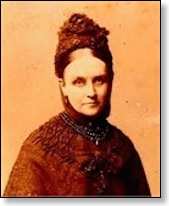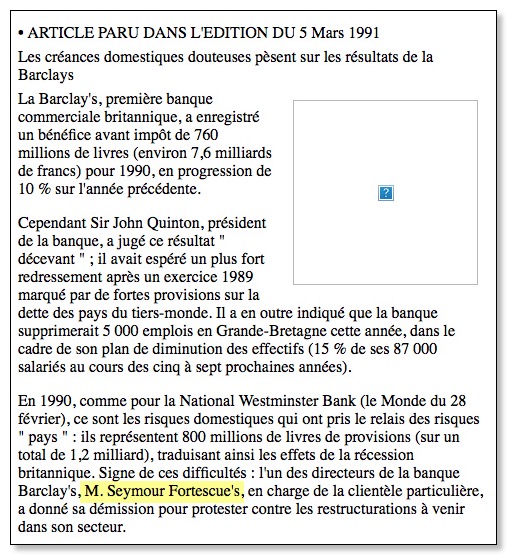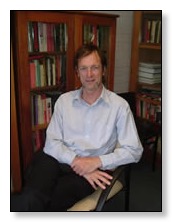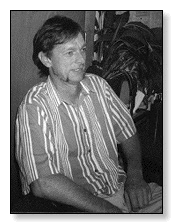Fortesque Smythe
Culling Delights
"We are needed to keep the population of foxes in check, it is as simple as that," he stated at the debate. "If we were not allowed to hunt foxes, then there would be lots of them. Lots more of them. You see?"
But surely there is a more humane way to reduce the population?
"Well, if we didn't hunt them down with vicious hounds and shoot them, we wouldn't be satisfying our own desire to kill another living creature and we'd have to murder someone. And no-one wants that, do they?"
Most certainly not. Lord Fotherington-Carstaires also pointed out the number of people whose livelihoods depend on the sport.
"Why, if there was no more fox-hunting I'd have to fire Jenkins, the lad who keeps my gun clean, and Jasper, who holds my hat, and young Fortesque-Smythe who blows on the trumpet. You see? Massive unemployment." This is partially the fault of scientific experiments in the sixties, which kept fox-hunters in sealed bio-spheres for several months, causing them to inbreed and create a strange and over-populated tribal fraternity of jodhpur-wearing freaks. No offence.
...

Sanctuary
| Vale of Sanctuary (VLE) | | | | ||
| | Selia/Ariel Kaitlyn Cheif Wiggums Purgatory Fortesque Aeolasa Seline Flashfire Kitra Draconis Lori Rashna Wards of the Vale (WOV) | ||||

Sam Fortescue
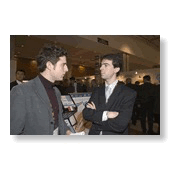
Sam Fortescue, Farmers Weekly with ...
(http://www.ukwheat.com/photos.htm)

Sue Fortesque (Sciences)
School of Cognitive and Computing Sciences
University of Sussex
HCT: Human Centred Technology GrouThe group is concerned with social and cognitive aspects of design, implementation and use of technology. Its main research objectives are:
- to develop frameworks for understanding how people interact with and communicate through technology;
- to apply this understanding to develop and support innovation.
The work of this group recently gained strong additional impetus through the 1995 ESRC Cognitive Engineering programme. Mike Scaife and Yvonne Rogers research on explaining external cognition for designing and engineering interactivity in educational and training systems is supported by a Cognitive Engineering award. The research is concerned with developing a theory of interactivity to inform the design of innovative multimedia software. Another Cognitive Engineering project is supporting Lydia Plowman's investigation, in collaboration with the Open University, of comprehension of interactive multimedia. Benedict du Boulay and Mike Sharples are building on their work since 1992 on the MR Tutor, a training environment for radiologists. They are now collaborating with De Montfort University and the Institute of Neurology, London, to carry out workplace studies of radiologists in a third Cognitive Engineering project.
Mike Sharples is investigating how socio-cognitive accounts of writing can inform the design of new writing environemnts. Mike Sharples also has funding from the DTI/EPSRC Initiative on Computer Supported Collaborative Work to develop CORECT, a collaborative requirements capture system. The partners on this project are Racal, Edinburgh University and Intelligent Applications. Yvonne Rogers and Mike Scaife are a partner of a EU Training & Mobility research network, which is concerned with developing cooperative technologies for complex work settings (COTCOS). Yvonne Rogers also collaborates with Apple Research Labs (USA) on designing future technologies, especially in the multimedia and publishing Industries.
Sharon Wood is working on the relationship between the informational need of planning agents and the guidance of slective perception, by attempting to identify principles guiding a general mechanism of attention. Steve Easterbrook is working on case studies of collaborative requirements engineering techniques, on a two-year secondment to the NASA Software Independent Verification & Validation Facility; after returning to Sussex he will interact with NASA staff on quantitative analyses of the imact of new techniques on reliability, safety, and softare re-usability.
Current and recent research students are working in similar fields to the above. Sadhana Puntambekar has designed and evaluated a domain-independent system to train secondary school pupils in the skill of learning from texts. She is now an RF working at Georgia Institute of Technology. Teresa del Soldato has looked at ways of adjusting the teaching style of an intelligent tutor according to a model of learner motivation and linking this to domain-focussed criteria. She is now researching at the Institute of Educational Technology, Open University. Maria Virvou has designed an active help system for Unix file system manipulations based on Michalski and Collins' Human Plausible Reasoning applied to assumptions about user-goals. She is now a lecturer in Athens. Roger Noble has investigated the role that program examples play in the learning of Prolog programming. Haider Ramadhan has developed and tested a discovery environment for elementary programming concepts that combines both free exploration as well as guided tutoring. He is now a lecturer in Qaboos Univeristy, Oman.
Rosemary Luckin is investigating the application of Vygotsky's zone of proximal development to ITS design and Jorge Ramirez-Uresti is examining the role of learning partners in intelligent learning environments. Alan Morris is developing a multimedia system that can assist the work of designers and material specifiers working in the building materials supply and construction industries. Sara Parsowith is developing a collaborative authoring tool for using on the Web. Zara al-Rawahi is developing a Web-based teaching environment for clinical medicine, based on multiple intelligences theory and a cognitive apprenticeship approach to learning.
Rafael Perez y Perez is applying a cognitive model of creativity and writing to the design of a story generation program. John Platts is investigating the cognitive processes of short story writers, to inform the design of story generation software. Ian Cullimore is investigating the design of informal interfaces, through a series of software tools. Sue Fortescue is investigating the organisational, social, and technical reasons for success and failure in large-scale software projects. Robert Ellis is developing an exemplar-based recognition and recall system using an interpretation process.
Mike Sharples
Senior Lecturer in Artificial Intelligence
School of Cognitive and Computing Sciences
University of Sussex
Falmer
Brighton
BN1 9QN
UK
PhD Students
Ian Cullimore, Informal Interfaces.
Sue Fortescue, Critical Success Factors in the Development of Large Software Systems.
Rafael Perez y Perez, A Computer Model of Creativity in Writing.
Robert Ellis, An Exemplar-Based Recognition and Recall System Using an Interpretation Process.
Zahra Al-Rawahi, Application of Gardner's Theory of Multiple Intelligences to the Design of Interactive Learning Software for Medicine.
Rosemary Luckin, The Application of Vygotsky's Zone of Proximal Development to the Design of Computer-Based Tutoring.
And also...
I race a Laser dinghy (badly), ski (better) and from time to time I try to scrape together a COGS volleyball team. That apart, my time is taken with partner (busy), two children (growing), cat (incontinent), rabbit (cosseted), garden (overgrown), house (precarious), three computers (wayward), and a piano (discordant).
Mike Sharples, mike@cogs.susx.ac.uk
Le multimédia en classe d'anglais -
langue étrangère à l'Université de Médecine et Pharmacie de Craiova - Roumanie
Readings, Week 5
TESL 330/4 & APLI 653B/4
Using Computers in Language Learning
auteurs de l'article: professeur docteur: Ion Georgescu
Doyen de la Faculté de Médecine de l'UMF de Craiova
Adresse:
UNIVERSITE DE MEDECINE ET DE FARMACIE CRAIOVA
strada Petru Rares nr.4, Craiova, 1100, Dolj, ROMANIA
Résumé :
La bonne utilisation des Nouvelles Technologies de l' Information et de la Communication (NTIC) est une de nos préocupations très nouvelles, importante et qui exige un grand effort. Avec l'information "au bout du doigt" (GATES, 1995:19) il y a la tentation de dire Oui ! à tout, mais qu'est ce qu'on en fait? Nous sommes partis de l'idée que l'ordinateur est premièrement une source d' information avec un contenu spécifique: il peut éditer des textes, il peut corriger des erreurs, il peut nous aider à explorer et trouver des idées nouvelles, il peut être le meilleur ami du professeur et des étudiants dans la classe de langue, dans notre cas: l'anglais, langue étrangere et l'anglais langue de spécialité. Notre tache comme professeur, a été, depuis l'introduction de l'ordinateur dans la classe de langue, tout à fait differente; entre nous et les étudiants de l'UMF, une nouvelle relation s'est installé. Nous avons utilisé, pour les étudiants de tous les niveaux des CD-ROM-s avec des cours d'anglais. Pour la I-ère année débutants nous utilisons l'ordinateur pour apprendre et corriger la prononciation, pour l'écoute et pour resoudre des exercices, donc pour l'évaluation. Le travail avec l'ordinateur est beaucoup plus attrayant par la liberté offerte, par l'absence du stress engendré par l'ancien relation professeur - étudiant, enfin par la présence des moyens multimédia. Pour la II-ème année, niveau moyen et avancé, nous avons proposé une activité quasi-indépendante de recherche sur l'Internet des pages médicales. Les étudiants ont fait des projets en group sur des thèmes suggérées par le professeur; projets avec lesquels on a organisé une minibibliothèque. Nous avons essayé dans notre démarche de diriger leurs recherches pour éviter la navigation passive et nous pouvons dire maintenant qu'en utilisant ces moyens moderns de transmission et d'aquisition du savoir, nos étudiants et nous les professeurs, nous avons tous gagné un plus de motivation pour travailler ensemble dans notre classe d'anglais.
(…)
Parmi les manières possibles pour développer la lecture, nous avons rencontrer à Jones and Fortesque, (1987:31), les suivantes:
" incidental reading " - lire pour un but réel.
" reading comprehension " (programmes pour le développement du vocabulaire et de la grammaire par des questions et des réponses)
" text manipulation " (identification, jumbling, storyboard)
(…)
BIBLIOGRAPHIE
1. Alava,S,1996, S'autoformer à l'école: influence des nouvelles technologies sur les pratiques d'autoformation documentaires, dans Pratiques d'autoformation et d'aide à l'autoformation, USTL, Les cahiers d'étude du CUEP
2. Jones, Cristopher and Fortesque, Sue,1987,Using Computers in Language Classroom, Longman
3. Ng.,Evelyn and Olivier, William, 1987, Call: An Investigation on Some Design and Implementation Issues in System (vol.15, no.1, p1-17)
4. Phinney, Marianne,1996, Exploring the Virtual World Computers in the Second Language Writing Classeroom in " The Power of Call " Athelstan Pub.,USA
5. Wyatt, David,1989, Computers and Reading Skills,in Teaching Languages with Computers - The State of Art, (ed. M.Pennington) Athelstan Pub.,USA
Spring Quarter
Topic 5
*Healey, Deborah and Norman Johnson. 1997. A Place to Start in Selecting Software. CAELL Journal. Vol. 8. No.1. Also online: http://ucs.orst.edu/~healeyd/cj_software_selection.html
Jones, Christopher and Sue Fortescue. 1987. Chapter 14, Summing Up: the place of the computer. In Using Computers in the Language Classroom. Longman, London and New York.
*Lewis, Pam. 1997. Using Productivity Software for Beginning language Learning, Part II: Spreadsheets, Databases, & Mail Merge. In Learning and Leading With Technology, Vol. 25, No. 1.
*Lewis, Pam. 1997. Using Productivity Software for Beginning language Learning, Part I: The Word Processor. In Learning and Leading With Technology, Vol. 24, No. 8.
Otto, Sue K. and James P. Pusack. 1993. An Introduction to Foreign Language Multimedia: The Ten Most Frequently Asked Questions. In Visions and Reality in Foreign Language Teaching: Where We Are, Where We Are Going. Ed. William N. Hatfield, National Textbook Company. pp. 57-61
Robinette, Michelle. 1996. Top 10 Uses for ClarisWorks in the One-Computer Classroom. In Learning and Leading With Technology, Vol. 24, No. 2.
Readings, Week 5
TESL 330/4 & APLI 653B/4
Using Computers in Language Learning
Readings:
On the current topic:
- **Healey, Deborah, The Stimulus Role in Something to do on Tuesday (Houston: Athelstan, 1995), pp 75-80.
- **Jones, Christopher & Sue Fortesque, Authoring: the teacher as materials writer in Using Computers in the Language Classroom (London: Longman, 1987), pp 41-47
- **Healey, Deborah. Conversation with the Computer, from Something to do on Tuesday (Houston: Athelstan, 1995). Pp 99-102.
Readings, Session 1
GSE 555
Computer Assisted Language Learning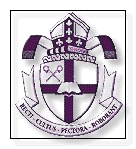
Readings:
- On this week's topics:
- **Healey, Deborah, The Stimulus Role in Something to do on Tuesday (Houston: Athelstan, 1995), pp 75-80.
- **Healey, Deborah. Conversation with the Computer, from Something to do on Tuesday (Houston: Athelstan, 1995). Pp 99-102. Please note that my copy of this book is on reserve at the Library, along with a number of other books, such as Virtual Connections. Ask for the books by course, or under my name.
- **Jones, Christopher & Sue Fortesque, Authoring: the teacher as materials writer in Using Computers in the Language Classroom (London: Longman, 1987), pp 41-47
- **Jones, Christopher. It's Not So Much The Program, More What You Do With It: The Importance of Methodology in CALL in System (14)2, 1986 pp. 171-178.
- ** Categorizing Software: Except from: Wyatt, David, Applying Pedagogical Principles to CALL in Modern Media in Foreign Language Instruction. edited by Flint Smith (Illinois: National Textbook Company, 1987) pp 87-93
- Dudley, Albert. Communicative CALL: Student Interaction Using Non-EFL Software, in CAELL Journal (6)3, 1995. Pp. 26-33.
MA Applied Linguistics and ELT
ENM91
English and New Technologies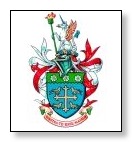
Course Description | | |
| Select Bibliography Barker, J. and Tucker, R. 1990. The Interactive Learning Evolution. Kogan Page Hardisty, D. and S. Windeatt. 1988. CALL. Oxford: OUP. Jones, C. and Fortesque, S. 1981. Using Computers in the Language Classroom. Scanlon, E. and O'Shea, T. 1991. Educational Computing. Scott, M. and T. Johns. 1993 . MicroConcord. Oxford: OUP. Sinclair, J. 1991 Corpus, Concordance, Collocation. Oxford: OUP. | ||

Stephen Fortescue (Sciences)
| | |
Assoc. Professor | Stephen Fortescue | |
| His principal areas of interest cover Soviet and Russian politics, science management in Russia, and Russian state bureaucracy. His current search focus is Russian industry policy, particularly in the mining and metals industry. He maintains a "watching brief" on Russian science policy. He is presently researching 'The Russian Metals Industry in Transition (1998 - 2000)," funded by an Australian Research Council large grant. This follows an earlier ARC large grant to investigate "The State and Industry Policy in Russian Transition (1995-97)." He has held fellowships at The Australian National University and The University of Birmingham. Ph.D. Australian National | | |
| | Courses Currently Taught: | |
Selected Publications | | |
| | | |
| | |
| | | |
Editorial | | |
| | | |
Musings from Moscow | | |
| | | |
Regional News: Central and Eastern Europe | | |
| | | |
| | ||
![]()
|


| | |
POLITICS | | |
| | | |
ECONOMICS | | |
| | | |
AACPCS/ANZSA | ||
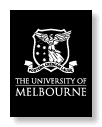
| | ||
| Preliminary Programme: | | |
| For more information about the conference, please contact one of the convenors below: A) Economics: Stephen Wheatcroft, History, University of Melbourne e-mail: | s.wheatcroft@history.unimelb.edu.au | |
| | | |

Series (Sciences)
LOCATION FORTESCUE NC
Established Series
Rev. RLV:AG
06/2000
FORTESCUE SERIES
The Fortescue series consists of very deep, very poorly drained soils in the Lower Coastal Plain. These soils formed in silty marine sediments over organic material around the larger lakes. Slopes range from 0 to 2 percent. Near the type location, mean annual temperature is about 62 degrees F., and mean annual precipitation is about 52 inches.
TAXONOMIC CLASS: Fine-silty, mixed, active, acid, thermic Cumulic Humaquepts
TYPICAL PEDON: Fortescue silty clay loam--cultivated.
(Colors are for moist soil unless otherwise stated.)
Ap--0 to 10 inches; black (10YR 2/1) silty clay loam; moderate medium granular structure; friable; common fine and medium roots; few fine pores; extremely acid; clear smooth boundary. (5 to 40 inches thick)
AB--10 to 21 inches; black (10YR 2/1) silty clay loam; moderate medium and coarse subangular blocky structure; friable; common fine and medium roots; few fine vesicular pores; extremely acid; gradual smooth boundary. (0 to 15 inches thick)
B--21 to 31 inches; black (10YR 2/1) clay loam; moderate coarse prismatic structure parting to strong medium subangular blocky; friable; slightly sticky; slightly plastic; common fine and medium roots; few fine vesicular pores; few fine very pale brown (10YR 8/4) pockets of wood ash; extremely acid; clear wavy boundary. (0 to 15 inches thick)
2Oa1--31 to 39 inches; black (10YR 2/1, broken face and rubbed) sapric material; about 5 percent fibers, less than 1 percent rubbed; moderate medium subangular blocky structure ; friable; slightly fluid; few fine and medium roots; many very pale brown (10YR 7/4) pockets and distontinuous layers of wood ash; common logs and stumps; extremely acid; gradual wavy boundary.
2Oa2--39 to 55 inches; dark brown (7.5YR 3/2, broken face and rubbed) sapric material; about 5 percent fibers, less than 1 percent rubbed; moderate medium subangular blocky structure; friable; moderately fluid; slightly sticky; common medium and coarse roots; common logs and stumps; extremely acid; clear smooth boundary. (Combined thickness of the 2Oa horizon is 20 to 52 inches)
3Ab--55 to 61 inches; black (10YR 2/1) very fine sandy loam; massive; friable; extremely acid.
TYPE LOCATION: Hyde County, North Carolina; about 0.3 miles east of the intersection of State Road 1305 and State Road 1311; 240 feet north of State Road 1311 on farm path; 50 feet west of farm path on north bank of east-west running ditch; Fairfield NW USGS topographic quadrangle; lat. 35 degrees 32 minutes 12 seconds N. and long. 76 degrees 10 minutes 12 seconds W.
RANGE IN CHARACTERISTICS: The surface mineral horizons range from 16 to 40 inches thick. The underlying organic horizons range from 8 to more than 52 inches thick. The soil ranges from extremely to strongly acid throughout, except where the surface has been limed. The underlying mineral horizons of some pedons may be moderately acid or slightly acid.
The Ap or A horizon has hue of 10YR to 5Y, value of 2 or 3, and chroma of 0 to 2. Texture of the Ap or upper A horizon is very fine sandy loam, loam, silt loam, or mucky loam. The lower A horizon is silt loam, loam, or silty clay loam.
The 2Oa horizons have hue of 2.5YR to 5Y or are neutral, value of 2 or 3, and chroma of 0 to 4. The organic material ranges from weak blocky structure in the upper layers to massive in the lower layers. Stumps, logs, and fragments of charcoal are common throughout the 2Oa horizons of most pedons.
The 3Cg horizons are stratified grayish or greenish sands, loamy sands, and sandy loams.
COMPETING SERIES: There are no other series listed in the same family.
GEOGRAPHIC SETTING: Fortescue soils are on nearly level surfaces of 0 to 2 percent around large lakes in the lower Atlantic Coastal Plain. They formed in silty lacustrine sediments deposited over organic material. Elevations range from 1 to 10 feet above sea level. The mean annual temperature ranges from about 61 to 65 degrees F., and the mean annual precipitation ranges from about 50 to 54 inches near the type location.
GEOGRAPHICALLY ASSOCIATED SOILS: These include the Belhaven, Engelhard, Hydeland, Pasquotank, Ponzer, Scuppernong, Weeksville and Wysocking series. Belhaven, Ponzer, and Scuppernong soils have organic material at the surface and are located on slightly lower landscapes. Engelhard, Hydeland, Pasquotank, and Weeksville soils are mineral soils but lack buried organic horizons. In addition, Englehard, Pasquotank, Weeksville and Wysocking soils are coarse-silty.
DRAINAGE AND PERMEABILITY: Very poorly drained; slow runoff; moderately slow permeability in the upper mineral horizons and moderately slow to moderately rapid in the organic horizons. The water table is within 12 inches of the surface for 4 to 6 months during most years.
USE AND VEGETATION: About one-half of these soils have been cleared and are used for corn, soybeans, pasture, and truck crops. Natural vegetation consists of mixed hardwood species. The common species are sweetgum, (Liquidambar styraciflua), red maple (Acer rubrum), yellow-poplar (Liriodendron tulipifera), southern baldcypress (Taxodium distichum), willow oak (Quercus phellos), water oak (Quercus nigra), and sweetbay (Magnolia virginiana).
DISTRIBUTION AND EXTENT: The Lower Coastal Plain of North Carolina and perhaps Virginia around large lakes. The soils are thought to be associated with the formation of lakes. They are of small extent.
MLRA OFFICE RESPONSIBLE: Raleigh, North Carolina
SERIES ESTABLISHED: Washington County, North Carolina; 1979.
REMARKS: These soils would have been classified as Alluvial in the 1938 classification. They were formerly mapped as a phase of the Hyde series. These soils are tentatively classified in the fine-silty family since a strongly contrasting particle-size class of fine-silty over muck is not recognized in soil taxonomy. These soils would be Thapto-Histic if such a subgroup was provided under Humaquepts.
Diagnostic horizons and soil characteristics recognized in the typical pedon are:
Umbric epipedon - the zone from the surface to a depth of 26 inches (Ap and A horizons)
Aquic conditions - observed endosaturation from the surface to a depth of 74 inches (all horizons)
MLRA(s): 153A, 153B
TABULAR SERIES DATA:
SOI-5 Soil Name Slope Airtemp FrFr/Seas Precip Elevation
NC0124 FORTESCUE 0- 2 61- 64 200-260 50- 54 1- 10
SOI-5 FloodL FloodH Watertable Kind Months Bedrock Hardness
NC0124 RARE 0-0.1 APPARENT DEC-MAY 60-60
SOI-5 Depth Texture 3-Inch No-10 Clay% -CEC-
NC0124 0- 6 L SIL MK-L 0- 0 100-100 7-27 3- 17
NC0124 6-26 L SIL SICL 0- 0 100-100 18-35 4- 12
NC0124 26-64 MUCK 0- 0 - 0- 0 20- 95
NC0124 64-74 VAR - - - -
SOI-5 Depth -pH- O.M. Salin Permeab Shnk-Swll
NC0124 0- 6 3.5- 5.5 2.-12 0- 0 0.6- 2.0 LOW
NC0124 6-26 3.5- 5.5 1.-5. 0- 0 0.2- 0.6 LOW
NC0124 26-64 3.5- 5.5 20-95 0- 0 0.2- 6.0 LOW
NC0124 64-74 - - - -
National Cooperative Soil Survey
U.S.A.
Sign (Curiosité)
Fortescue Inn, Salcombe, Devon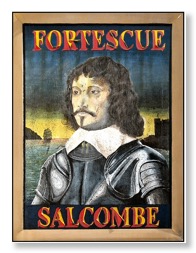
A well as the large pub sign the Fortescue inn sports a double sided sign which can only be seen from Union Street. This side carries a Fortescue portrait (sorry I don't know which , member of the family * ) whilst the other side shows the Fortescue coat of arms.
* cf Edmund Fortescue ici
http://www.flickr.com/photos/lincolnian/3966909794/in/photostream/

Seymour John Fortescue, R.N. The Hon.
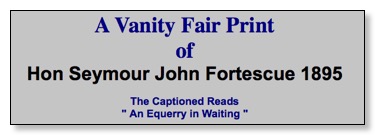
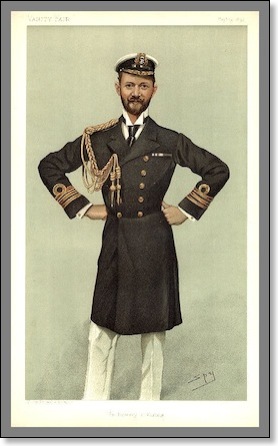

Vanity Fair Print: Hon Seymour John Fortescue 1895
![]()
http://www.darvillsrareprints.com/vanityfairmilitary4.htm![]()
http://www.antiquemapsandprints.com/p-16327.jpg
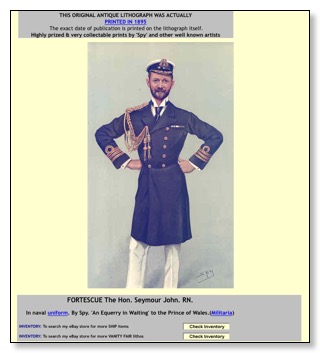


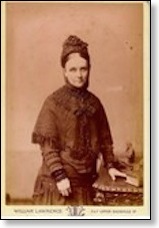 .
. 